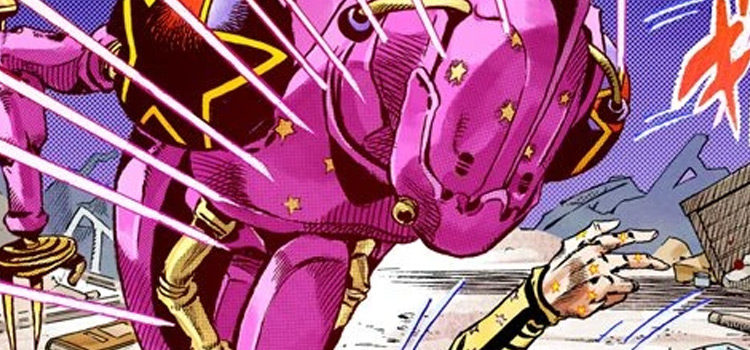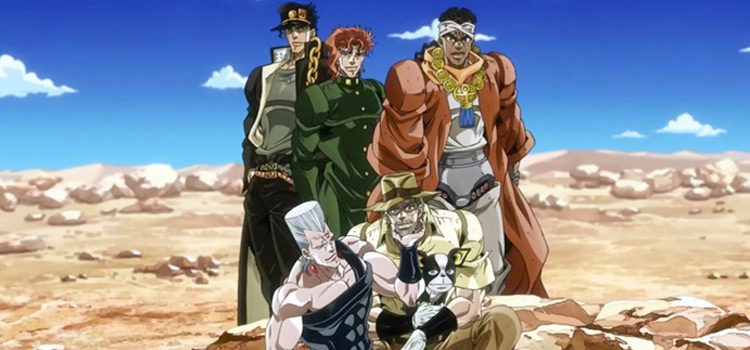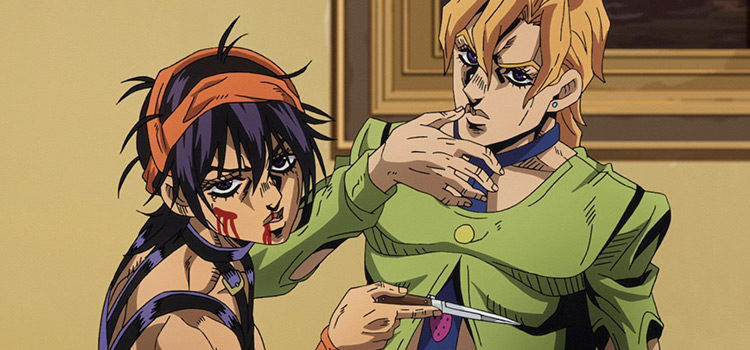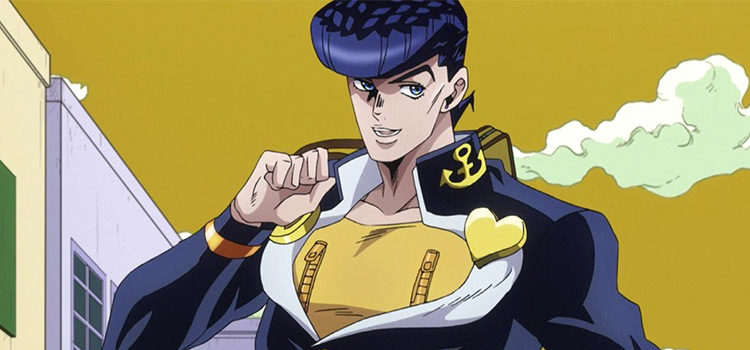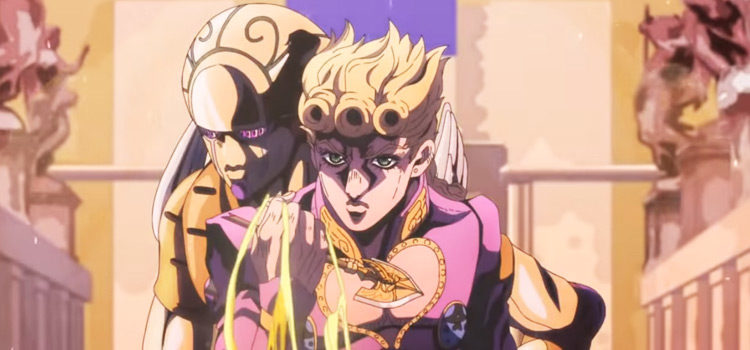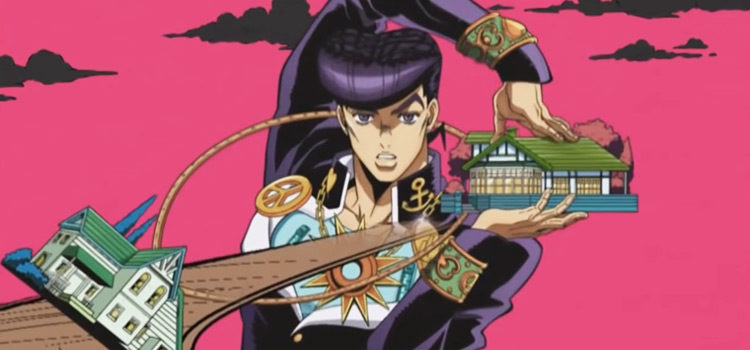Best JoJo’s Bizarre Adventure Parts: The Ultimate Ranking
This post may contain affiliate links. If you buy something we may get a small commission at no extra cost to you. (Learn more).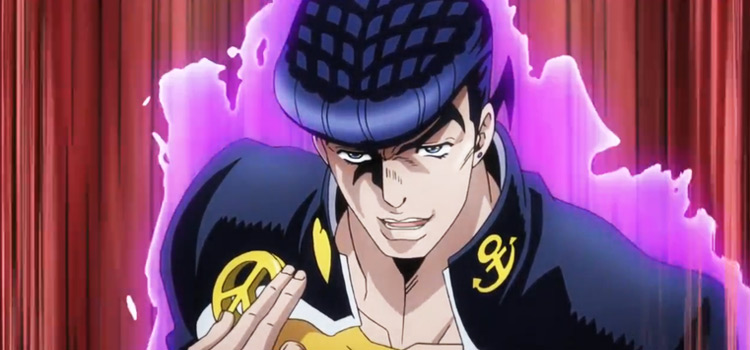
JoJo has been running for over thirty years… and we’re only on the eighth part!
The arcs are commonly divided as follows:
The Stone Mask Trilogy (1-3); The Stand Arrow Trilogy (4-6); The Steel Ball Trilogy (7-8,?).
It’s gone through many radical changes, the universe ridiculously fleshed out and complex. This is embolic of the art style with Hirohiko Araki becoming a better artist with each consecutive part, resulting in the current design sensibilities of JoJolion.
Join me, ladies and gents, as we go forward under these bizarre circumstances to rank each JoJo part (so far).
8. Part 1: Phantom Blood
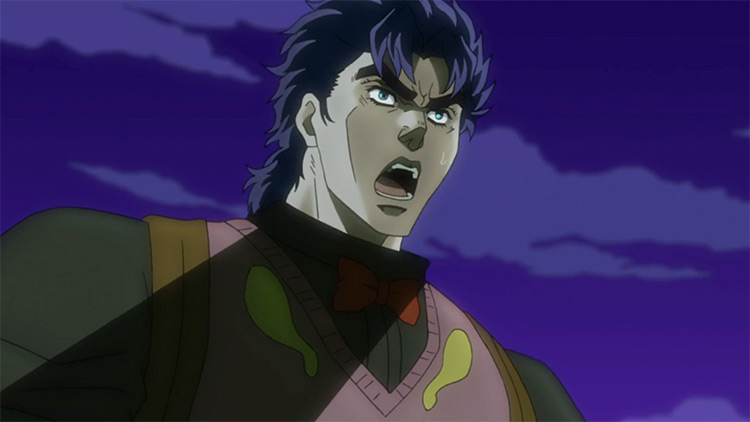
Set in the late Victorian 1800s, Phantom Blood is a story about Jonathan Joestar and his adopted brother, Dio Brando, and follows the rivalry between them.
There are some legendary scenes in this exceptionally short story. But it doesn’t live long enough to leave a large impact on the reader, outside of the ending.
What’s commendable is Araki’s willingness to drop entire characters and storylines – that had developed fans and reputation – in order to move onto the next part.
Not many mangakas would be willing to start all over again like Araki.
Phantom Blood is the first and worst part of JoJos’s Bizarre Adventure. It’s the first necessary step towards the madness to come, and a brilliant base benchmark for Araki’s artistic abilities.
There are some great moments, but the pace and driving narrative is quite formulaic and boring. Nonetheless, the characters shine bright. And it serves as a great precursor for part 2: Battle Tendency.
Also the magic mechanic, Hamon, isn’t as effective and falls quite flat in this part.
7. Part 3: Stardust Crusaders
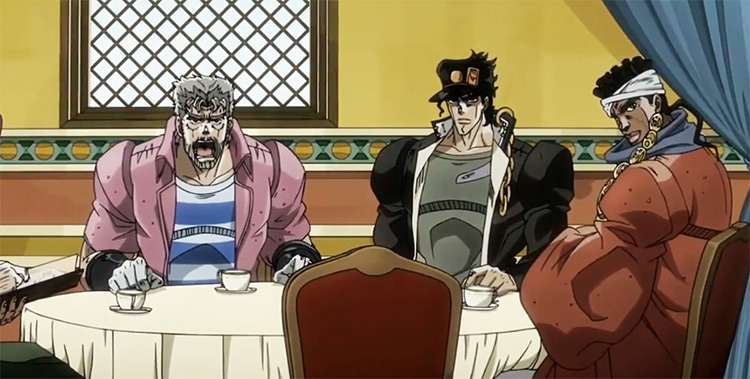
Set in the 1989, Stardust Crusaders takes us from Japan to Egypt and everywhere in-between, mimicking the style of a Verne novel in its direction.
Dio is back – or DIO, rather – and Joseph Joestar (protagonist of part 2: Battle Tendency, now an aged man) sees it as his responsibility to avenge his grandfather.
He starts by visiting his grandson, Jotaro Kujo of Japan, a calmfaced delinquent who’s recently developed a Stand.
Alongside a few other companions, the Stardust Crusaders must battle through many obstacles to reach DIO and put an end to his century-long tormenting of the Joestar bloodline.
Jotaro himself is a nice blend between Jonathan and Joseph, and has went down as one of the best – particularly for his appearances in later parts.
Stardust Crusaders holds many of the same flaws of Phantom Blood, while also improving on them in every way.
The introduction of Stands (a far superior mechanic for combat writing than Hamon) was a brilliant move by Araki. But they come with their own growing pains that only iron out in the second half of Stardust Crusaders.
The art style is suitably adjusted, perfected into the iconic style embolic of The Stone Mask Trilogy. But still featured moments of questionable design and posture.
Nonetheless, it’s an immensely entertaining experience, only slightly ruined by pacing issues and those aforementioned growing pains.
6. Part 6: Stone Ocean
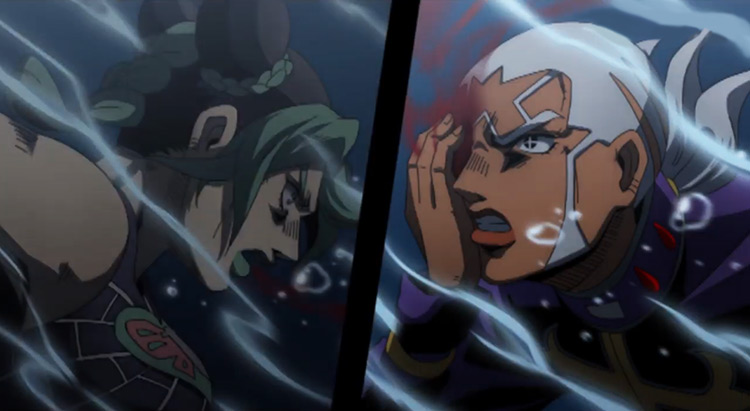
Set at the start of the century, Stone Ocean follows the daughter of Jotaro Kujo(Jolyne) who has been imprisoned for a murder she claims was not her fault.
She’s on the brink of accepting her confinement when her father arrives. And she ends up receiving a Stand.
What initially starts as a prison break ends up turning into something far more dire, with the fate of the universe at stake.
Stone Ocean was intended as the climax to JoJo’s Bizarre Adventure, and wraps up the trilogies of the Stone Mask and Stand Arrow with a tragically unforgettable arc.
The Stand mechanics featured in Golden Wind are expanded, making this one of the most dynamic parts in terms of combat. And the villain is unique in design, perspective, and execution.
Unfortunately, its sense of setting and characterization takes a sideways step from Diamond is Unbreakable and Golden Wind, resulting in an anticlimax… however, with enough thought that bathos ends up turning into one of its strengths.
Araki’s style established in parts 4 and 5 is maintained her with slight variation. And for a while, this part was considered his magnum opus – until he surprised everyone with a seventh.
5. Part 2: Battle Tendency
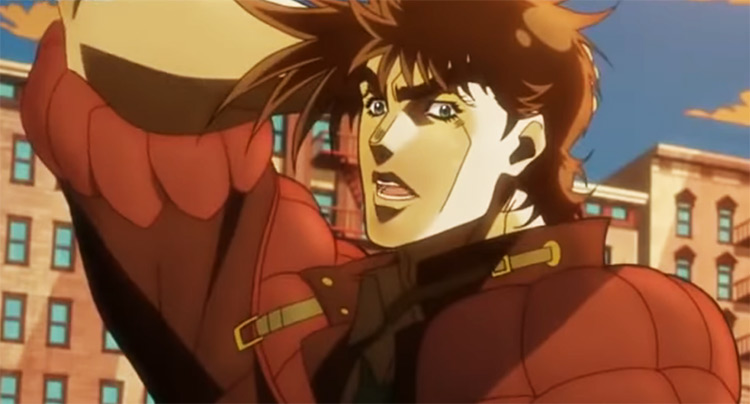
Set in the 1930s, Battle Tendency was the last part to use Hamon as its central mechanic.
Thankfully, it was refined from Phantom Blood – alongside everything else.
The artwork is clearer and possesses more style. The poses are near-impossible, the Bizarre-ness is notched up a lot, and the characters are more relatable.
Joseph Joestar is everything his grandfather Jonathan was not: a cheat, a gambler, with a cocky arrogant to boot.
Alongside some familiar faces and a new companion in Caesar, he must train to stop the Pillar Men: an ancient species of godlike proportions hell-bent on conquering the sun.
In both the manga and anime adaptation, this is where the style kicks in.
The rigid stoicism punctuated with comedic zaniness is appropriately reversed, resulting in an unpredictable adventure across the globe culminating in a dynamic and unforgettable climax.
4. Part 4: Diamond is Unbreakable
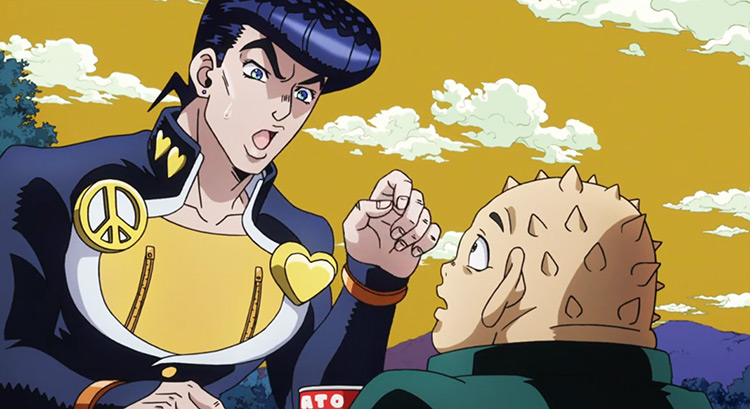
Set in the late-1990s in the fictional town of Morioh within Japan, Diamond is Unbreakable is a stark departure from formula in every respect.
Josuke is a fleshed-out iteration of the goofy Joestar seen in Battle Tendency. And is accompanied by the greater developed Jotaro to create a greater balance between protagonist personalities.
The setting is confined to one town, allowing greater worldbuilding and a more slice-of-life structure.
And the megalomaniac villains of Dio, Kars, and DIO are replaced by the humble wants of a decadent man in Yoshikage Kira.
Diamond is Unbreakable also stands out artistically from beginning to end.
It starts with harsh, muscular forms reminiscent of Stardust Crusaders. Then ends with smooth & bendy figures more akin to fashion models or diva stars.
Stands are also vastly improved over part 3, with variety keeping the intrigue and excitement at a high throughout its long length. Though less directionless, and more reliant on antics over thematics, Diamond is Unbreakable was the start of something exceptional for Araki.
3. Part 5: Golden Wind
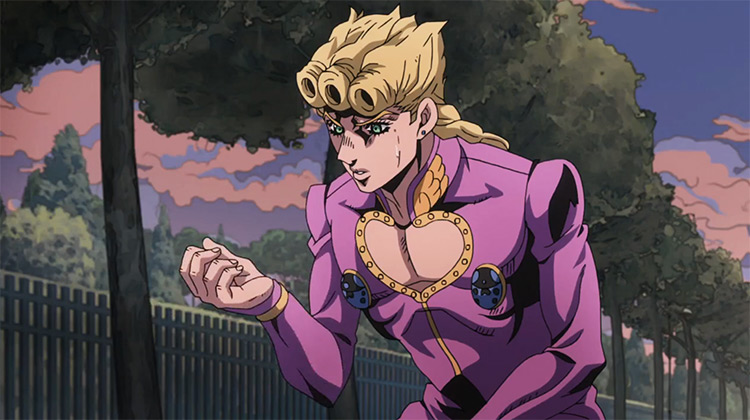
Set around the same time as Diamond is Unbreakable, Golden Wind follows the son of Dio (DIO) Brando and Jonathan Joestar (it’s complicated).
Giorno Giovanna is a boy intertwined with nature, who had lived a sad life lacking in nurture.
Through a series of personal events, he commits himself to toppling the Mafia running the Italian city where he lives, and enlists as one of them. He soon encounters Bruno Bucciarati, a nurturing man in charge of a small mafia gang.
Together they resolve to find the leader of their organization and hold him accountable.
Golden Wind is the black horse of the franchise.
It’s nearly entirely distinct from the central narrative. It’s more violent than the rest (with most encounters ending in a violent amount of bloodshed) and is the most thematically deep part so far.
Concepts of pre-determinism, agency, and moral ambiguity are brought to the forefront here.
Every enemy encounter is well developed, and the Greek-Roman-Italian settings give every fight a gladiatorial and epic atmosphere.
This is also where Araki perfected Stand mechanics, constructing some of the most fascinating conflicts in manga/anime history. Plus the artwork is exceptional, leaning heavily into the style seen at the end of Diamond is Unbreakable, but fused with the inspiration Araki received visiting Greece and Rome.
All the characters are drawn with Michelangelo proportions, artistically posing at any given moment to bring the page (or screen) to life.
2. Part 7: Steel Ball Run
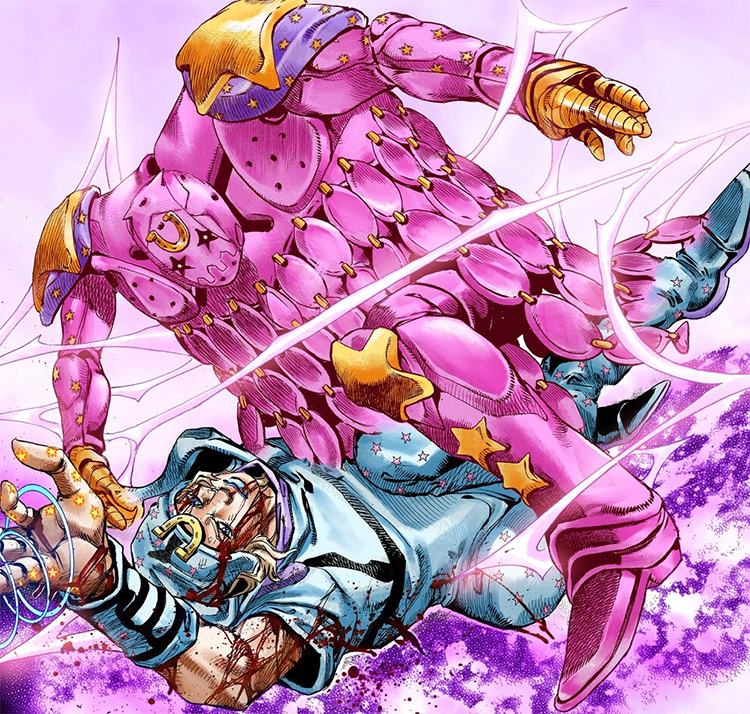
We’re in a new universe now. Set in the late 1800s oncemore, though this time in America.
The seventh part of JoJo’s Bizarre Adventure is a distillation and perfection of the Stone Mask Trilogy, told through a different lens.
This time we follow Johnny Joestar, an unsure paraplegic jockey keen to compete in the transcontinental Steel Ball Run race.
Before the race begins, he encounters the cowboy-styled Gyro Zepelli. And they decide to team up as master and apprentice.
What follows is a constantly evolving story with some of the best art seen in manga. Each page is rife with detail and expression, and I’m so excited for an anime adaptation.
The villain, Funny Valentine, is the most complex yet.
Plus the setting is dynamic, with weather and seasons changing throughout its gargantuan length. I’d also say the Stand battles are exciting, and Araki even implemented a new mechanic called the Spin: a nod to Hamon which surpasses it in every way.
This is what a series reboot aspires to be. The previous six parts were practice for this, and it will go down as one of Araki’s greatest works.
1. Part 8: JoJolion
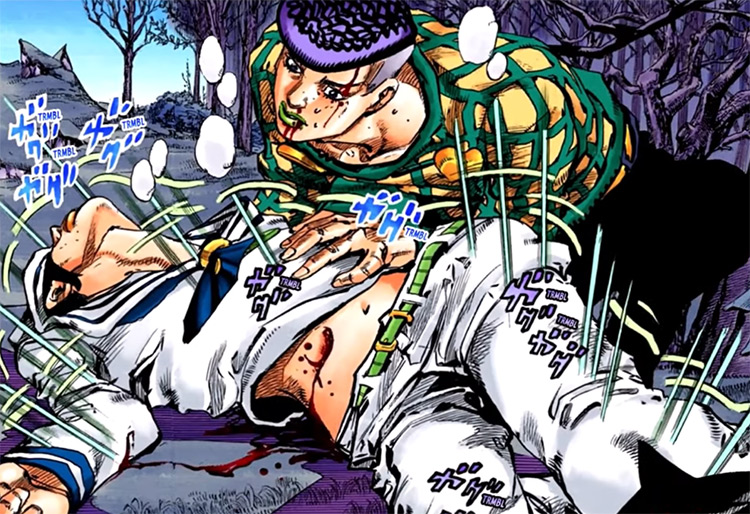
Here we are.
It’s very bold of me to put JoJolion in first place, but hear me out.
Set in alternate modern day Morioh, part eight follows ‘Josuke Higashikata’ in name only: he is in fact a fusion between two other characters.
At the very beginning we’re introduced to him, a naked man in the mud with some anatomical inaccuracies. He has no memory, no sense of place nor identity. A blank slate.
JoJo’s Bizarre Adventure has dealt with concepts of nurture and nature before – primarily through Golden Wind – but nowhere is it better demonstrated than here.
Josuke is a blank slate – tabula rasa – and this story is one of self-discovery.
From the family he joins, to the friends he makes, to the love he feels, Josuke is unique to the other Joestars in that everything is a first. And Araki tackles these themes head on, making him a complex character imprinted upon by his environment.
This is also, in my opinion, where Araki’s artwork has solidified into its own.
It escapes the conventions of nearly every style in manga today to be wholly original and unique, taking elements of every other part to become an amalgamation of them all.
JoJolion is Araki’s consciousness inked onto paper, featuring deep thematic imagery that have created fan theories nearing a decade old. It’s a twisting, turning, introspective thriller with a constantly engaging mystery and deep mature core.
I’m hoping it ends with a bang, not a whimper(or maybe that that whimper is thematically resonant), as we may be looking at one of the best manga yet.
